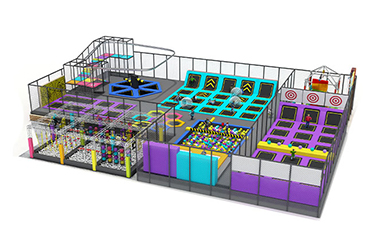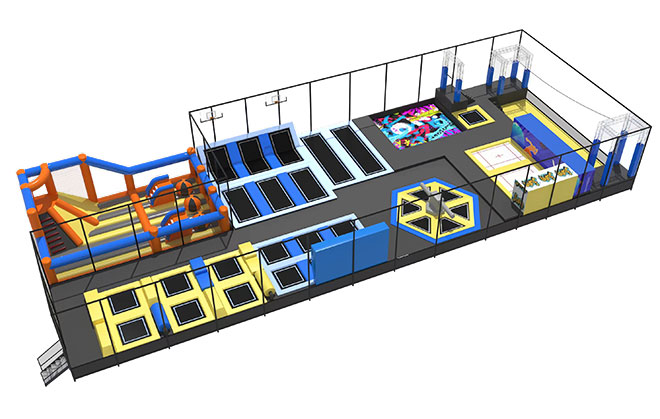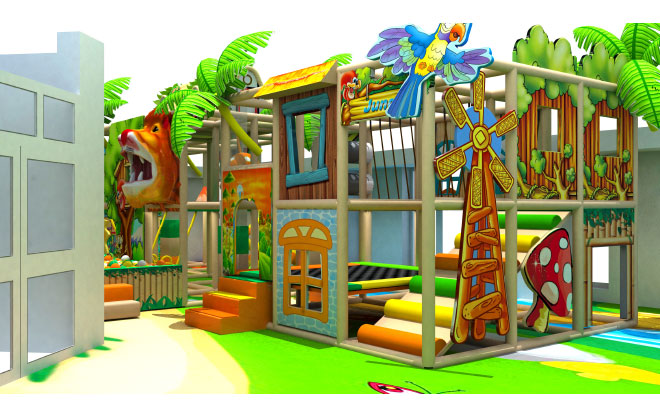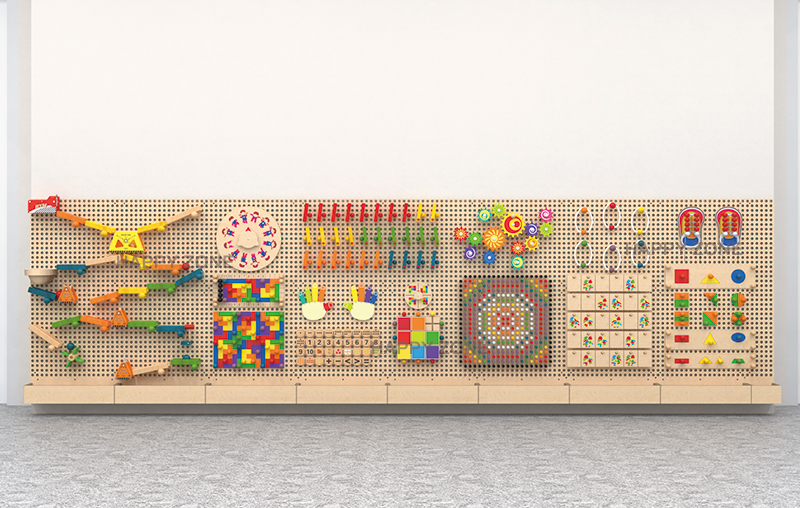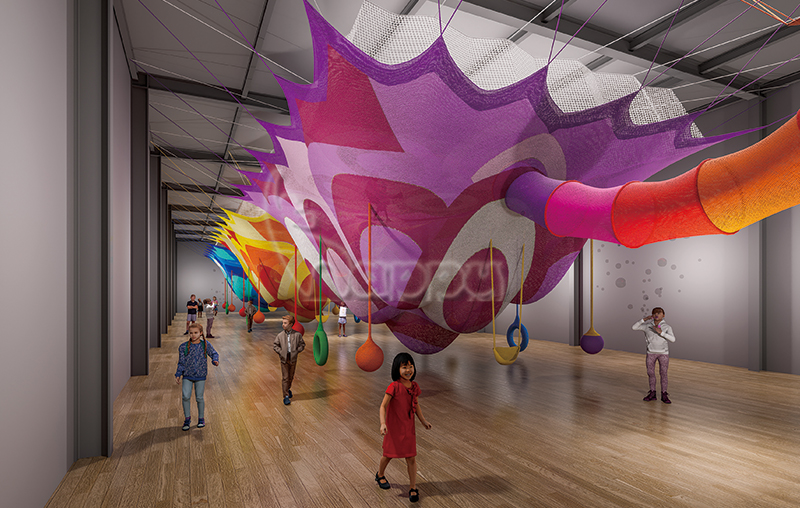Product Catalog
So, you're dreaming of opening an indoor trampoline park. It's an exciting venture that promises fun, fitness, and fantastic memories for your community. But one of the most fundamental and critical questions you'll face is: "How big should it be, and how high should the ceilings be?" Getting these foundational elements wrong can lead to safety hazards, operational issues, and a poor customer experience.
Let's break down the key recommendations for indoor trampoline park size and height in a clear, structured way.
Part 1: The Critical Factor - Ceiling Height
When it comes to safety, ceiling height is non-negotiable. It is the single most important physical dimension of your park.
Recommended Minimum Height: 18 to 20 Feet (5.5 to 6.1 meters)
This is the industry standard for a reason. It provides a safe buffer for jumpers, especially on high-performance trampolines, slam dunk lanes, and other elevated features.
Why 18 Feet? This height accounts for the jumper's upward trajectory. An average person can jump several feet into the air on a trampoline. With 18 feet of clearance, even an enthusiastic jumper is at a safe distance from lights, beams, ductwork, or the ceiling itself. This minimizes the risk of head or upper-body injuries.
When to Go Higher (20-25 Feet / 6-7.6 meters): If your budget and building allow, opting for 20 feet or more is highly advisable. This is crucial for areas with:
- High-Performance Trampolines: Used by gymnasts and advanced users who achieve significant air.
- Slam Dunk Lanes: Where jumpers run and jump to dunk a basketball, often propelling themselves quite high.
- Ninja Warrior Courses: Which often feature swinging, climbing, and dropping elements.
In short, never compromise on height. A higher ceiling is always a safer and more versatile ceiling.
Part 2: Determining Your Overall Park Size (Square Footage)
The total size of your park is more flexible and depends heavily on your business model, target market, and budget. However, we can outline some general guidelines.
Small to Medium Park: 15,000 - 25,000 Sq Ft (1,400 - 2,300 Sq M)
This is a great starting point for a new operator or a market with a smaller population. It allows for a solid variety of attractions without an overwhelming initial investment.
What fits here? A main trampoline court, a dedicated dodgeball court, a foam pit, a toddler zone, and a small café or party room.
Large Park: 25,000 - 40,000+ Sq Ft (2,300 - 3,700+ Sq M)
This size is ideal for competitive markets or for creating a true regional destination. It allows for a wider array of attractions and can host larger groups comfortably.
What fits here? Everything from a medium park, plus additional features like a ninja warrior course, climbing walls, battle beams, virtual reality zones, a larger arcade, and spacious party rooms.
Key Consideration:Remember to allocate significant space for non-jumping areas. This includes a welcoming reception, a seating area for parents, party rooms, lockers, and restrooms. A good rule of thumb is that about 30-40% of your total square footage will be for these support spaces.
Part 3: Bringing It All Together with Professional Guidance
Planning the size and layout of a trampoline park is a complex puzzle. It's not just about fitting in as many trampolines as possible; it's about creating a safe, efficient, and exhilarating flow. This is where partnering with an expert becomes invaluable.
- Custom Design and Layout: Their experts will help you maximize every square foot of your space, ensuring a logical and safe guest flow between attractions.
- Safety-First Engineering: They understand the critical importance of ceiling height and structural integrity, ensuring all installations meet or exceed industry safety standards (like ASTM).
- Attraction Selection: Based on your target market and available space, they can recommend the perfect mix of attractions—from thrilling ninja courses to safe toddler areas—that will make your park a success.
By leveraging the expertise of Happy Zone, you can confidently answer the "size and height" question with a data-driven, safety-compliant, and profit-optimized plan.
Conclusion
Height is for Safety: Aim for a minimum of 18 feet, with 20-25 feet being ideal for a superior and safer park.
Size is for Strategy: Your total square footage (15,000 to 40,000+ sq ft) will define your capacity and the variety of attractions you can offer.
Investing in the right dimensions from the start, guided by experienced professionals, is the first bounce toward building a successful and sustainable indoor trampoline park.









